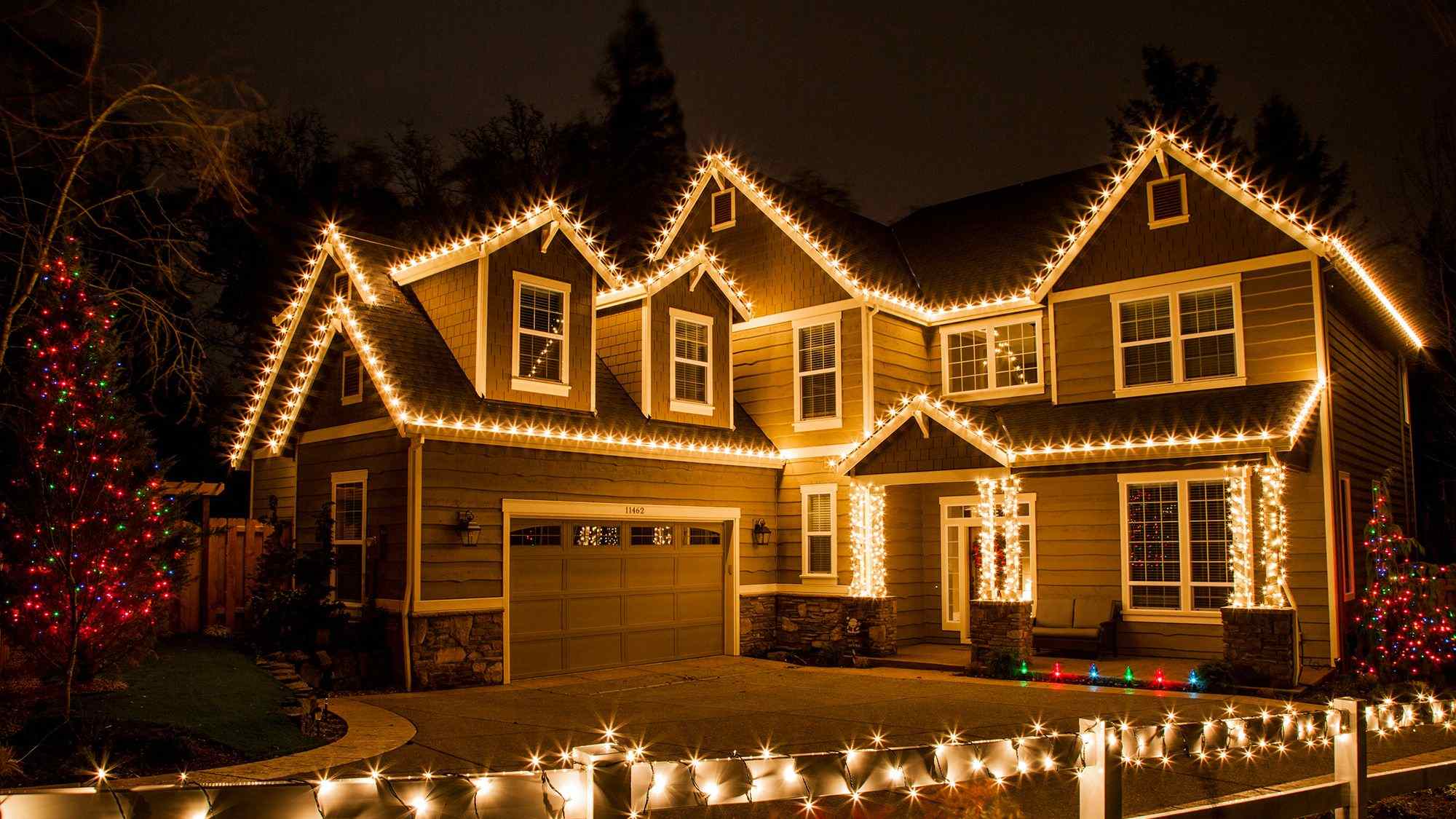The Ultimate Guide to Hanging Holiday Lights

Winter is approaching, and with each passing day, it gets darker earlier. But there’s a bright spot on the horizon: It’s time to decorate your home with festive holiday lights. Before you haul out the holly, grab your ladder, and untangle light strands of holiday seasons past, consult our guide to lock in your game plan.
Not long ago there was just one way to illuminate the outside of your home: string lights with large incandescent bulbs. Today, there is a variety of holiday lights—string, icicle, net, pathway, and spotlight—available with LED or incandescent bulbs. Incandescent lights are more affordable and emit a warmer glow, but LEDs are more energy efficient, last longer, and never get too hot to touch.Read More : Guidelines to enhance your outdoor lighting You can connect together more strings of LED lights than you can incandescent lights. Plus, LEDs typically produce a brighter, more vibrant light than incandescent bulbs. Some LEDs are programmable, allowing you to change the light color and select various illumination modes, such as always-on, twinkling, and sequential blinking.
The type and style of lighting that’s right for your home depends on the look you want. We break down what you need and how to install four popular holiday lighting designs.
BEST LIGHTS TO HIGHLIGHT YOUR ROOF
C9 or Icicle
Both incandescent and LED string lights are sold in C6, C7, and C9 sizes. These strawberry-shaped string lights are the most traditional style and deliver a much-loved retro vibe. To showcase your roof, use C9s, which are larger, brighter, and more visible from the street compared to C6s and C7s.
Invented in 1996, icicle lights mimic one of winter’s most iconic scenes: icicles hanging from the edge of a roof. Each string has a series of white bulbs—typically 9 to 18 inches in length—that hang vertically from a wire. Not as bright as C9s, icicle lights add whimsical charm to any home, especially a Victorian or Colonial.
How to Decorate
Run C9 string lights along the eaves—usually attached to the gutters—and then up the gable ends to the peak of the roof. You can also place C9 light strands vertically down each corner of the house to outline your home for more brightness and definition.
If you opt for icicle lights, string them from second-story balconies or perimeter joists of decks, or hang them from rain gutters. The best way to attach lights to a roof isn’t with nails or staples, but with plastic light clips. There are many sizes and styles, but all work similarly: Hook the clip onto the front edge of the gutter or directly to the roof shingles, then slide the light strand into the clip. Space clips close enough together to prevent sagging, usually every 12 to 16 inches.
Not long ago there was just one way to illuminate the outside of your home: string lights with large incandescent bulbs. Today, there is a variety of holiday lights—string, icicle, net, pathway, and spotlight—available with LED or incandescent bulbs. Incandescent lights are more affordable and emit a warmer glow, but LEDs are more energy efficient, last longer, and never get too hot to touch.
The type and style of lighting that’s right for your home depends on the look you want. We break down what you need and how to install four popular holiday lighting designs.
BEST LIGHTS TO HIGHLIGHT YOUR ROOF
C9 or Icicle
Both incandescent and LED string lights are sold in C6, C7, and C9 sizes. These strawberry-shaped string lights are the most traditional style and deliver a much-loved retro vibe. To showcase your roof, use C9s, which are larger, brighter, and more visible from the street compared to C6s and C7s.
Invented in 1996, icicle lights mimic one of winter’s most iconic scenes: icicles hanging from the edge of a roof. Each string has a series of white bulbs—typically 9 to 18 inches in length—that hang vertically from a wire. Not as bright as C9s, icicle lights add whimsical charm to any home, especially a Victorian or Colonial.
How to Decorate
Run C9 string lights along the eaves—usually attached to the gutters—and then up the gable ends to the peak of the roof. You can also place C9 light strands vertically down each corner of the house to outline your home for more brightness and definition.
If you opt for icicle lights, string them from second-story balconies or perimeter joists of decks, or hang them from rain gutters. The best way to attach lights to a roof isn’t with nails or staples, but with plastic light clips. There are many sizes and styles, but all work similarly: Hook the clip onto the front edge of the gutter or directly to the roof shingles, then slide the light strand into the clip. Space clips close enough together to prevent sagging, usually every 12 to 16 inches.
Source: www.popularmechanics.com
